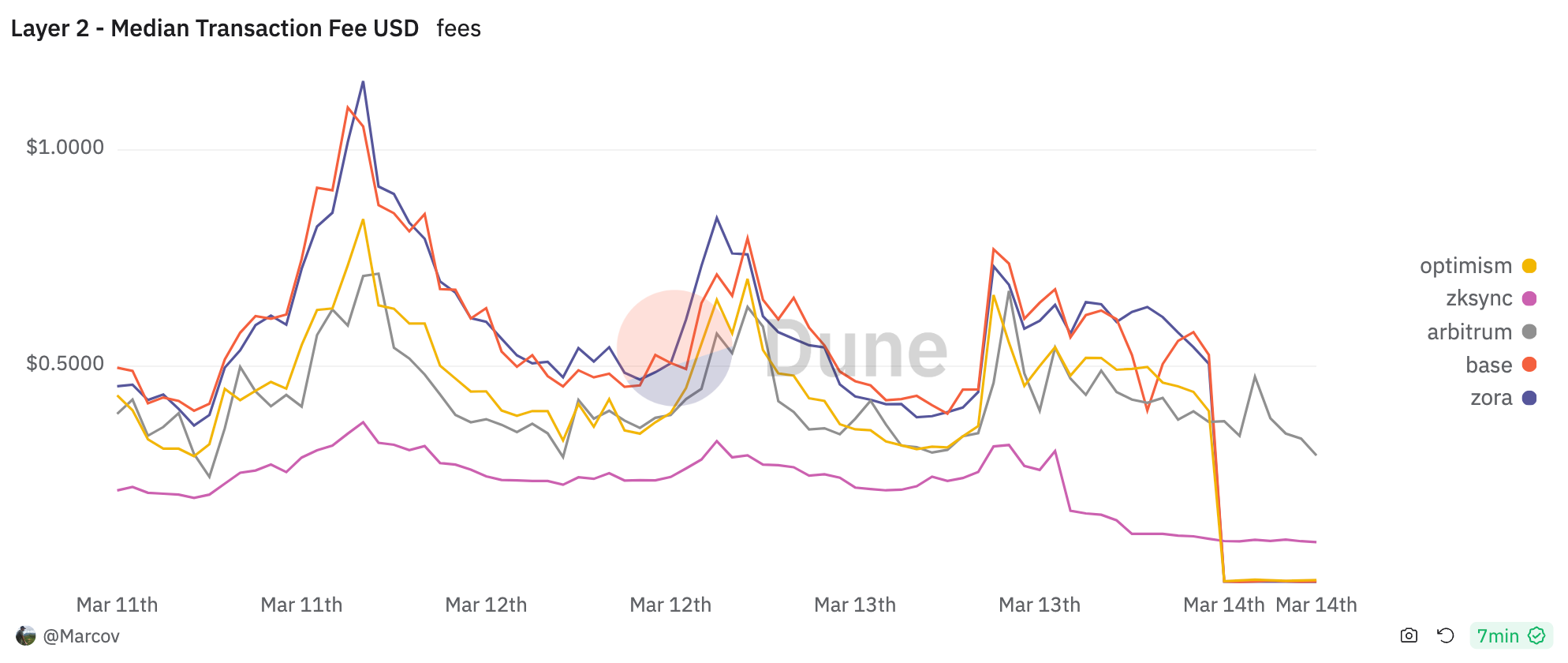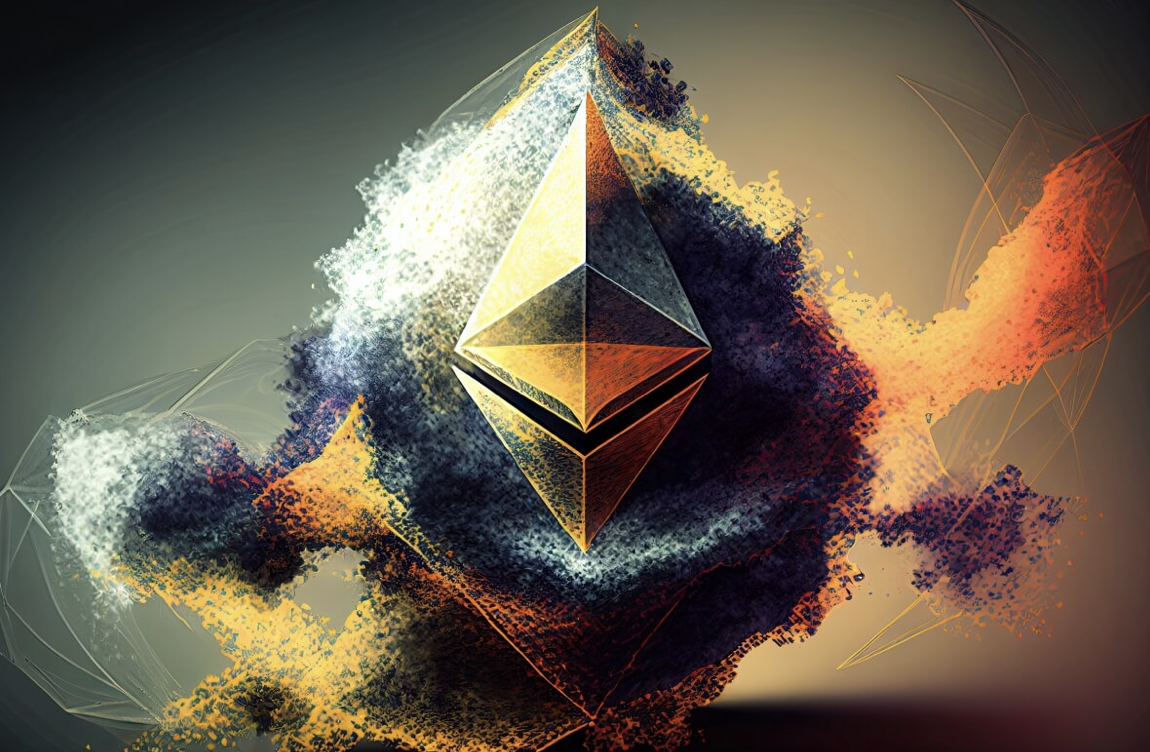Ethereum‘s mainnet saw a successful implementation of the Dencun update yesterday, which has fulfilled its promise by significantly reducing transaction fees on Layer 2 networks. The implementation of EIP-4844 has led to a dramatic drop in average transaction fees across major Layer 2 networks due to the introduction of a new transaction type called blobs. These blobs serve as a new milestone for networks when publishing information on Ethereum, replacing the traditional “calldata” method and offering a direct way to reduce fees.
Transaction Fees Drop Significantly After Dencun Update
Data from various Layer 2 networks, including those in the Optimism ecosystem like OP Mainnet, Base, and Zora, as well as other networks like zkSync and Starknet, show significant reductions in transaction fees. For example, according to on-chain data collected by Marcov using Dune, the average transaction fee on the Base network dropped from $0.5 to about $0.0012 following the Dencun update. Similarly, transaction fees on OP Mainnet also saw a substantial decrease reflecting the positive impact of the update.

Transaction fees on the Layer 2 network Starknet have also dropped significantly. Following the Dencun update, swap fees at Argent, a major wallet provider on the network, decreased from $6.8 to $0.04.
Arbitrum One, a widely used Layer 2 network, has not yet integrated the Dencun update into its network because it plans to release the ArbOS update today, which will bring blob support to the Arbitrum rollup network, so transaction fees have not dropped yet.
Transaction Fees May Rise Again
Despite the benefits that the reduction in transaction fees brings to networks, as more Layer 2 networks adopt blobs, it is expected that transaction fees could potentially rise again in the future. With over 3,000 blobs already loaded, competition for blob space is expected to intensify, potentially leading to slightly higher transaction fees for users.
Nevertheless, the reduction in transaction fees following the Dencun update has greatly increased the usability and scalability of Layer 2 networks. The overall effect of the update on the networks will become more evident as the ecosystem continues to evolve.










